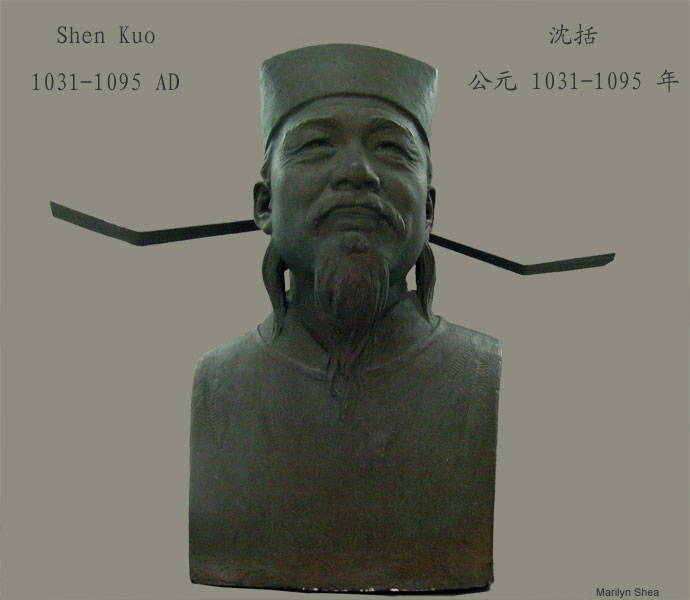 |
| The talents of Shen Kuo (1031-1095) extended to almost every field of learning. He was a gifted mathematician, astronomer, geologist, poet, and produced work in medicine, biology, and botany, as well as holding government posts as diplomat, finance minister, and state inspector. He held many government positions during the Song Dynasty (960-1279) including the position as head of the Imperial Department of Astronomy.
Much of what we know about this period comes from his Dream Pool Essays (梦溪笔谈 Mèngxī Bǐ Tán), an encyclopedic account and description of many of the advances and inventions of the period. From him, we learn of the invention of movable type by Bi Sheng 畢昇, the use of the magnetic compass for navigation, and advances in architecture and medicine. In astronomy, Shen Kuo proposed the theory that heavenly bodies were spheres based on his observations of the waxing and waning of the moon. He supported the hypothesis that the moon was reflective rather than producing light itself proposed earlier by 張衡 Zhāng Héng and others. His data, coupled with demonstrations on spheres was more influential. He described the difference between magnetic north and true north, as well as measuring the movement of the polestar over time. He improved astronomical instruments including the gnomon, clepsydra, and the armillary sphere. He embarked on a five year project with Wei Pu to measure the locations of the planets and moon. On the basis of his data he hypothesized that the planets have retrograde motion, what we call epicycles, in their orbits. While Shen Kuo produced a calendar based on his observations it was never put into full practice, and is lost to history. By the Song Dynasty, the measurements of Yi Xing (683-727) were outdated. It was these measurements that spurred Shen Kuo to make measurements of the polestar and later of the planets. While he would have produced an improved calendar, the time was not ripe for a full revision. Through Chinese history, as we have seen, the calendar was revised periodically. Even though their concept of a calendar was much more malleable and realistic than in the west, it was still a major event to change it. As long as the old calendar could be used to predict seasons and eclipses, there was resistance to change. His observations were, however, included in the star charts of his contemporaries. |
http://hua.umf.maine.edu/China/beijing2.html
Last
update: May 2007
© Marilyn Shea, 2007